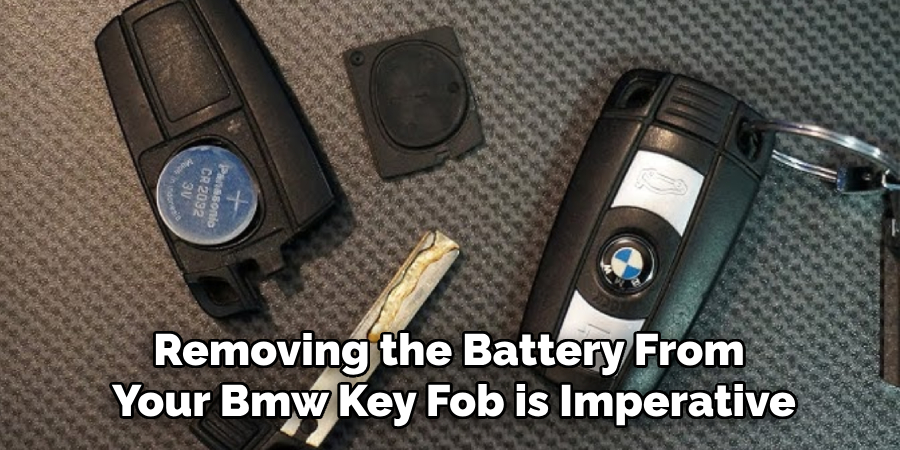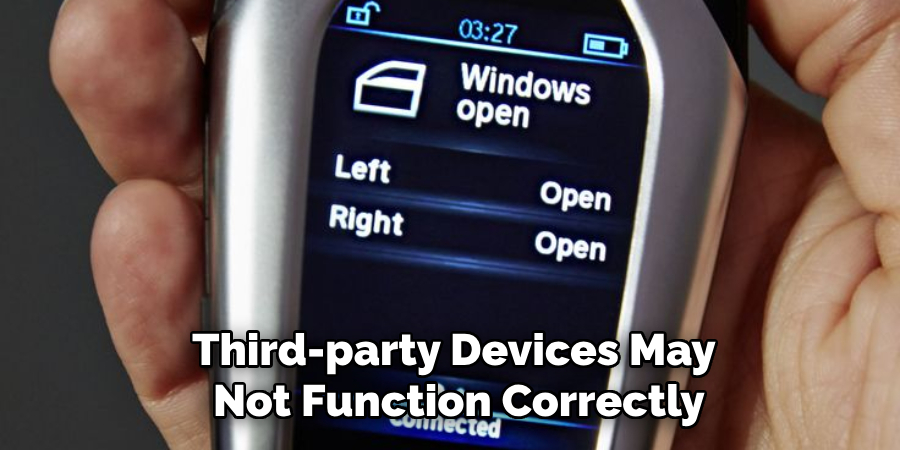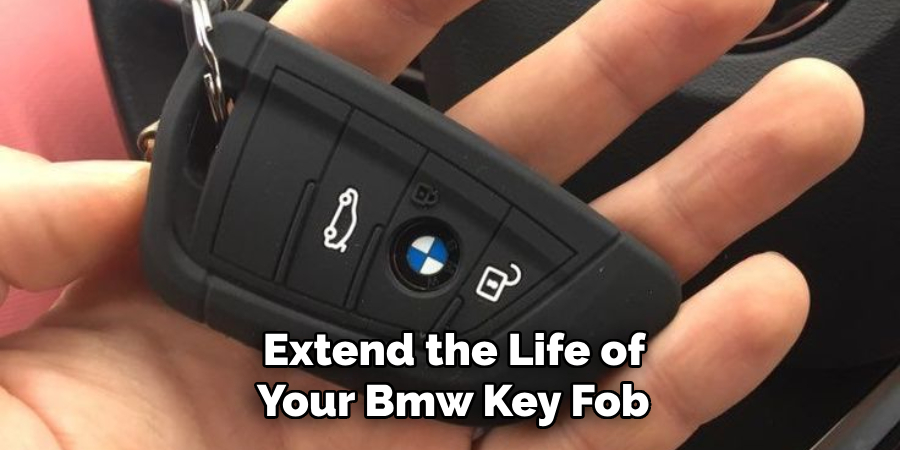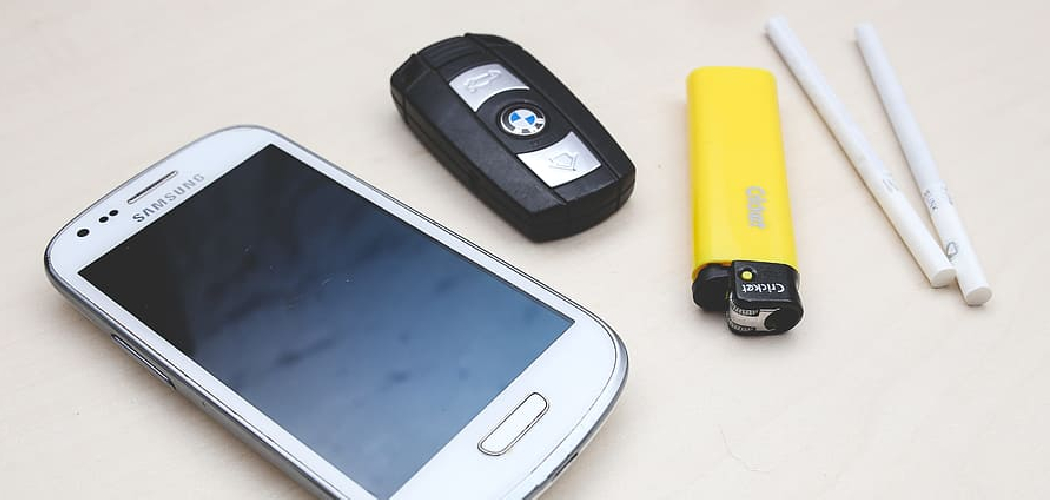Are you having trouble unlocking your BMW with your key fob? Is the button getting stuck or not working at all? Don’t worry, you’re not alone. Key fobs can accumulate dirt and grime over time, which can cause them to malfunction.

Cleaning your BMW key fob is essential to ensure its longevity and proper functionality. Over time, key fobs can gather dirt, oils, and debris from regular use, which may affect their appearance and performance. Following a few simple steps, you can safely clean your BMW key fob without damaging its delicate components.
This guide on how to clean a BMW key fob will walk you through the process, helping you maintain its pristine look and functionality.
What Will You Need?
Before cleaning your BMW key fob, ensure you have the necessary materials ready. Here’s what you’ll need:
- A soft cloth or microfiber towel
- Rubbing alcohol or mild soap solution
- Cotton swabs
- Toothpick or small brush
- Paper towels
Once you have all the materials, follow the steps below to properly clean your BMW key fob.
10 Easy Steps on How to Clean a BMW Key Fob
Step 1. Remove the Key Fob Battery

To start the cleaning process, removing the battery from your BMW key fob is imperative. This prevents any accidental damage to the electronic components and ensures your safety while handling the fob. To remove the battery, locate the battery compartment, typically found on the back of the fob, and open it carefully.
Use a small flat tool or your fingernails to pry open the compartment without exerting too much force to avoid damaging the cover. Once the compartment is open, gently remove the battery and set it aside in a safe, dry location. Keep in mind to remember the battery’s orientation, as you will need to replace it in the exact same way later. With the battery removed, you are now ready to clean the key fob properly.
Step 2. Brush Away Loose Dirt and Debris
Before applying any cleaning solution, use a soft-bristled brush, such as a toothbrush, to gently remove any loose dirt or debris from the surface of your BMW key fob. Pay special attention to the grooves and edges where dirt tends to accumulate. Holding the key fob at an angle can help dislodge debris more effectively. Don’t press too hard to avoid scratching the surface or damaging the buttons. This step ensures that any loose particles are removed before moving on to more profound cleaning methods, reducing the risk of dirt being pushed further into the components.
Step 3. Clean the Surface of the Key Fob
Once loose dirt and debris have been removed, dampen a soft microfiber cloth with a small amount of isopropyl alcohol or a gentle cleaning solution. Gently wipe down the surface of your BMW key fob, focusing on areas that may have smudges or stains. Use a cotton swab dipped in the solution for hard-to-reach places, such as around the buttons or crevices. Avoid letting excess liquid drip into the key fob to prevent internal damage. After cleaning, a dry microfiber cloth removes any remaining moisture and leaves the surface streak-free.
Step 4. Check and Replace the Key Fob Battery
After ensuring the exterior of the key fob is clean, it’s a good time to check the battery’s condition. Consider replacing the battery if your BMW key fob has been unresponsive or showing signs of low power, such as reduced range or delayed responses. Refer to your owner’s manual for the correct battery type and replacement instructions. To replace the battery, gently open the key fob casing by sliding or pressing a small release mechanism. Remove the old battery and insert the new one, ensuring correct polarity. Once done, reassemble the key fob and test its functionality. This step ensures your key fob remains reliable for uninterrupted use.
Step 5. Reprogram the Key Fob
If your key fob isn’t functioning correctly after replacing the battery, it may need reprogrammed. Some BMW models require re-initialization to sync the key fob with your vehicle. Start by sitting inside the car with all doors closed. Insert the key into the ignition and turn it to the first position, then back to the off position, removing the key. Immediately press and hold the unlock button on the key fob while pressing the lock button three times. Release the unlock button, and your key fob should now be reprogrammed. Repeat the process for additional key fobs as needed. Consult your BMW manual for model-specific instructions to ensure proper synchronization.
Step 6. Test the Key Fob

After replacing the battery and reprogramming the key fob, testing its functionality is essential to ensure everything works correctly. Stand near your vehicle and try locking and unlocking the doors using the key fob buttons. Test any other functions, such as opening the trunk or activating the panic alarm, if applicable. If any features still don’t work, double-check the battery installation and reprogramming steps or consult a professional for assistance. Proper testing ensures your key fob is fully operational and ready for use.
Step 7. Seek Professional Assistance if Necessary
If you’ve followed all the steps and your key fob isn’t functioning correctly, it may be time to seek professional assistance. Visit your local BMW dealership or an automotive locksmith who specializes in key fob programming and repairs. They have the specialized tools and expertise to diagnose and resolve any issues. Seeking professional help ensures your key fob is appropriately addressed, saving you time and effort while preventing potential damage to the device.
Step 8. Prevent Future Issues with Regular Maintenance
To avoid future issues with your BMW key fob, establish a routine for key fob care and maintenance. Keep the key fob clean and free from exposure to excessive moisture or extreme temperatures, as these conditions can damage the internal components. Replace the battery when you notice a reduction in range or responsiveness, and avoid dropping or mishandling the device to prevent physical damage. By taking these preventive measures, you can prolong the lifespan of your key fob and ensure it remains reliable.
Step 9. Consider Keeping a Spare Key Fob
Having a spare key fob readily available can be a lifesaver in case your primary fob is lost, damaged, or malfunctions unexpectedly. Ensure the spare key fob is programmed and functional, and store it in a secure but accessible location. This precautionary measure provides peace of mind and minimizes inconvenience during unforeseen situations. Keeping a spare can save time and prevent unnecessary stress, especially in emergencies.
Step 10. Use Caution with Aftermarket Key Fobs

While aftermarket key fobs may seem like a cheaper alternative to OEM (original equipment manufacturer) fobs, they pose potential risks. These third-party devices may not function correctly or could be incompatible with your BMW’s system, causing programming issues and even damage. Sticking with genuine BMW key fobs is best, as they are specifically designed for your vehicle and are more reliable in the long run. In case of need a replacement, consult a reputable dealership or locksmith who can provide you with an authentic OEM key fob that is guaranteed to work seamlessly with your BMW.
By following these steps and taking precautions, you can ensure your BMW key fob remains in top condition for reliable use.
5 Things You Should Avoid
- Using Harsh Chemicals: Avoid using potent cleaning agents such as bleach, ammonia, or alcohol-based solutions, as they can damage the delicate electronic components and the exterior finish of the key fob.
- Submerging in Water: Never immerse your BMW key fob in water. It is not waterproof; excessive water exposure can lead to permanent damage or malfunction.
- Applying Excessive Force: Avoid prying or using too much pressure while cleaning, as this may crack the casing or dislodge essential components inside the fob.
- Using Abrasive Materials: Steer clear of abrasive scrubbers or tools like steel wool that can scratch or wear down the surface of the key fob.
- Ignoring Proper Drying: Do not neglect thorough drying after a gentle cleaning process. Any moisture left inside or outside the key fob can wreak havoc on its electronics.
By avoiding these common mistakes, you can extend the life of your BMW key fob and ensure it continues to function properly.

Conclusion
Proper maintenance and cleaning of your BMW key fob are essential to ensure its longevity and optimal performance. You can keep your key fob in excellent condition by following the correct cleaning procedures and avoiding common pitfalls. Always use gentle cleaning methods, avoid harsh chemicals, ensure proper drying, and handle it carefully.
These simple steps will protect your key fob from damage and save you from costly replacements or repairs in the future. Keep your BMW key fob clean and functional—it’s a small effort that goes a long way.
Hopefully, the article on how to clean a BMW key fob has provided you with valuable information and tips. Now, it’s time to put them into practice and keep your key fob in top-notch condition!

